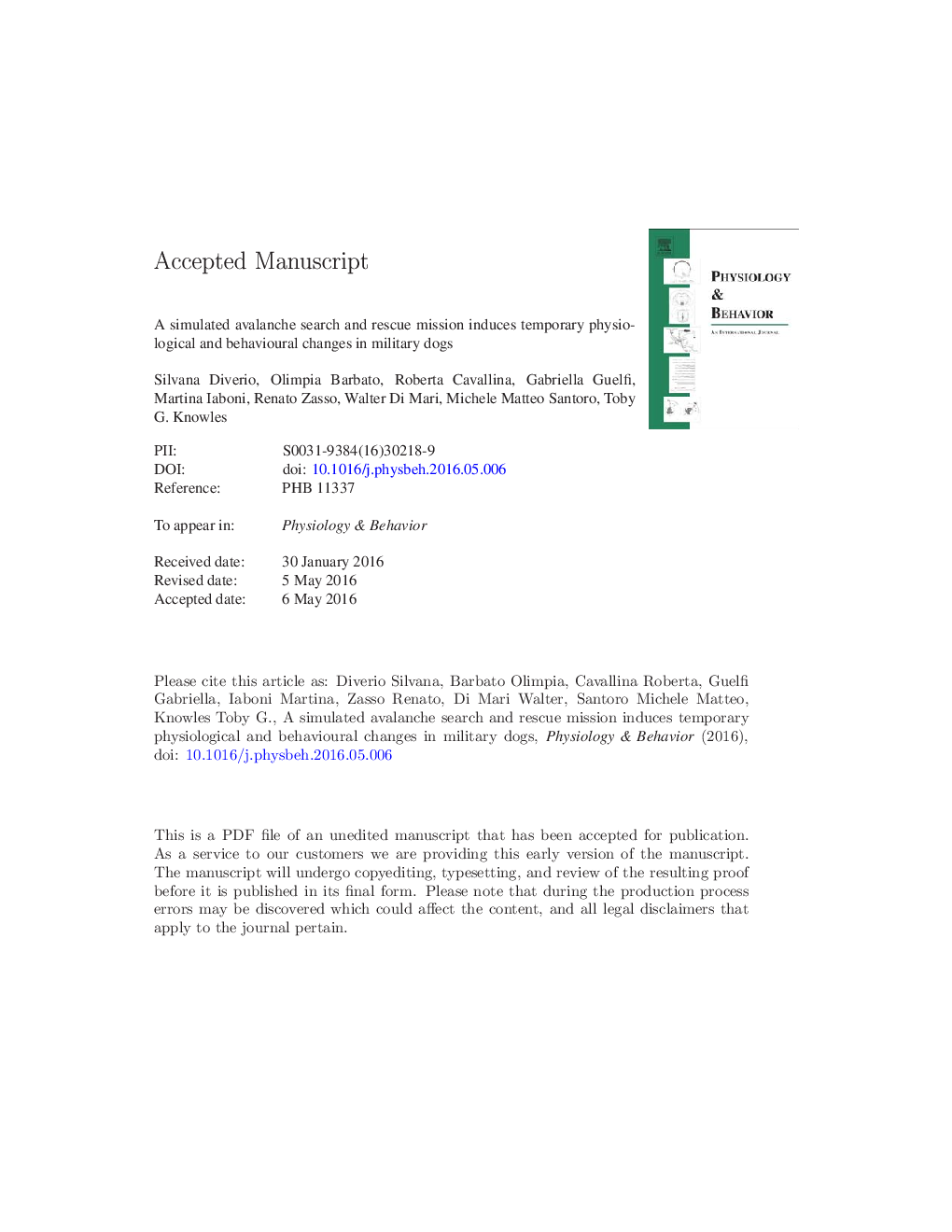| Article ID | Journal | Published Year | Pages | File Type |
|---|---|---|---|---|
| 5922920 | Physiology & Behavior | 2016 | 39 Pages |
Abstract
All dogs successfully completed their search for the buried, simulated victim within 10Â min. The SASR was shown to exert significant increases on RBT, NEFA and cortisol (PÂ <Â 0.001), CK and HR (PÂ <Â 0.01), AST and LDH (PÂ <Â 0.05). These indicate the activation of a response to stress probably induced by the addition of factors such as helicopter transport, disembarking, and the search and rescue exercise. However, changes were moderate and limited over time, progressively decreasing with complete recovery at T3 except for sera cortisol that showed a slightly slower decline. More time walking within the search was related to lower RBT, conversely to walking. Standing still with head up and exploring with head-up were inversely related with HR. Agreement between handler and observers' opinions on a dog's search mission ability was found only for motivation, signalling behaviour, signs of stress and possessive reward playing. More time signalling was related to shorter search time. In conclusion, despite extreme environmental and training conditions only temporary physiological and behavioural changes were recorded in the avalanche dogs. Their excellent performance in successful simulated SASR may be attributable to extensive training and good dog-handler relationships. Simulated SASR did not seem to impair SAGF dogs' performance or welfare.
Related Topics
Life Sciences
Biochemistry, Genetics and Molecular Biology
Physiology
Authors
Silvana Diverio, Olimpia Barbato, Roberta Cavallina, Gabriella Guelfi, Martina Iaboni, Renato Zasso, Walter Di Mari, Michele Matteo Santoro, Toby G. Knowles,
